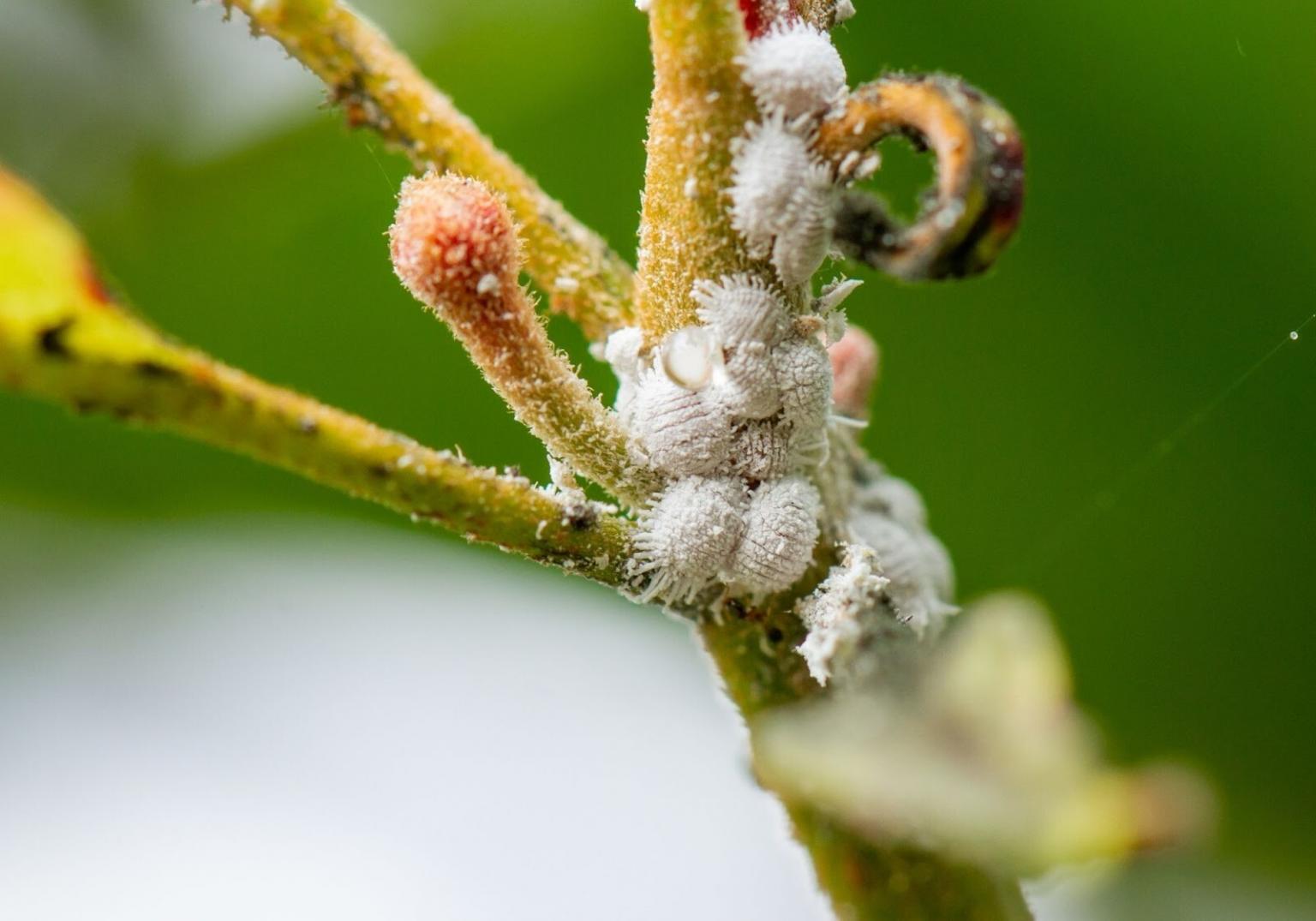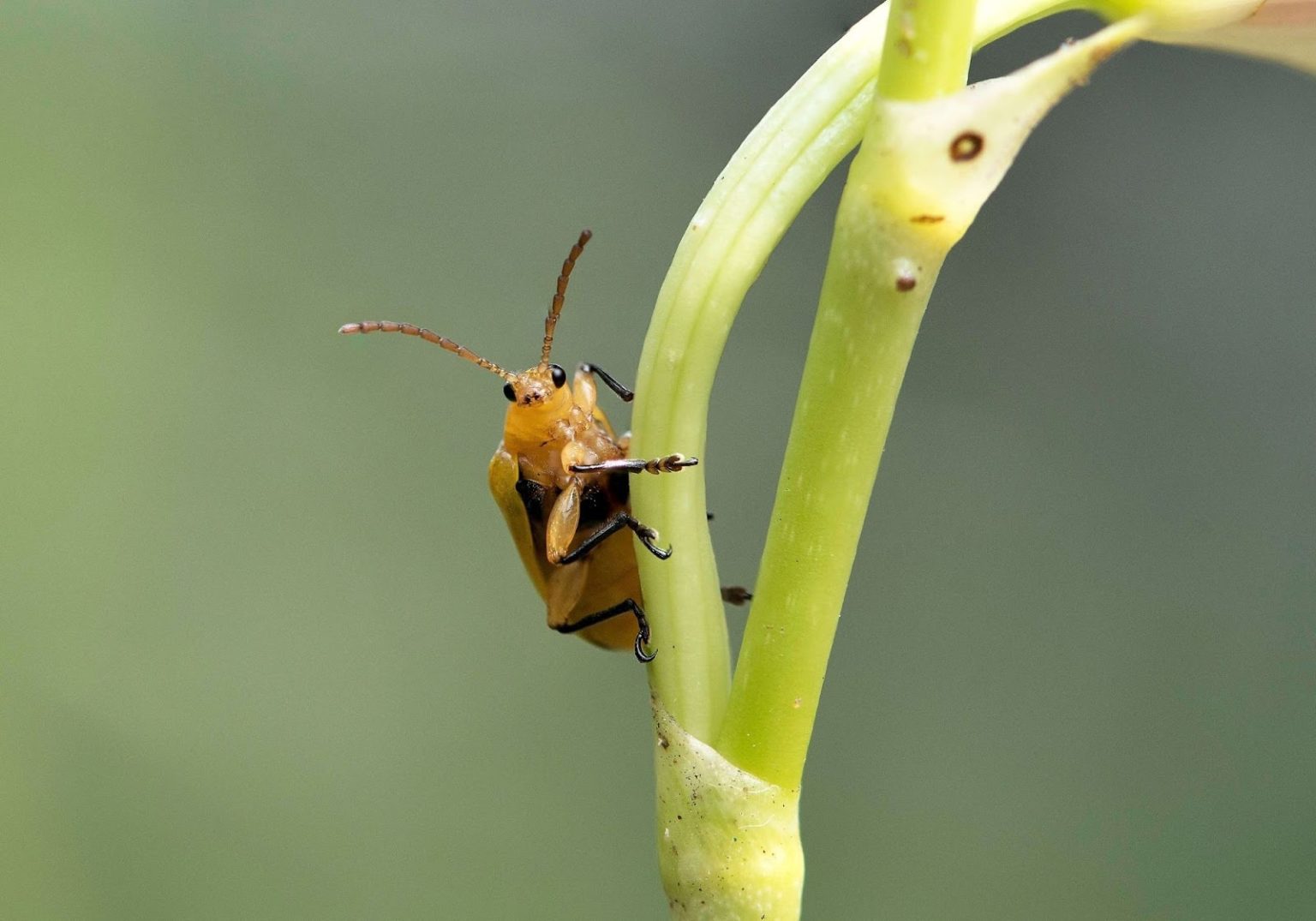Bugs on orchid plants can be a major headache for orchid enthusiasts. These pests can cause a variety of problems, from stunted growth to yellowing leaves. In this article, we’ll take a closer look at the different types of bugs that can infest orchid plants, the damage they can cause, and effective methods for controlling and preventing infestations.
Orchid plants are susceptible to a wide range of pests, including aphids, mealybugs, scale insects, spider mites, and thrips. These pests can feed on the plant’s leaves, stems, and flowers, causing damage that can range from minor cosmetic issues to severe health problems.
Types of Bugs Affecting Orchid Plants: Bugs On Orchid Plants

Orchids, known for their captivating beauty and elegance, can sometimes fall prey to various types of bugs that can hinder their growth and overall health. Understanding the different types of bugs that commonly infest orchid plants is crucial for effective pest management and maintaining the vitality of these prized plants.
This comprehensive guide provides an extensive list of common bugs that infest orchid plants, along with their scientific names, physical characteristics, feeding habits, and life cycles. High-quality images or detailed descriptions are included to aid in accurate identification, enabling orchid enthusiasts to take timely and appropriate measures to protect their plants.
Aphids
Aphids are tiny, soft-bodied insects that can be green, black, or brown in color. They have long antennae and piercing mouthparts that they use to suck sap from plant tissues. Aphids can cause stunted growth, yellowing leaves, and honeydew production, which can attract ants and other pests.
Scientific name: Aphidoidea
Mealybugs
Mealybugs are small, white, and fluffy insects that resemble cottony masses on the stems and leaves of plants. They have piercing mouthparts that they use to feed on plant sap. Mealybugs can cause stunted growth, yellowing leaves, and wilting.
Scientific name: Pseudococcidae
Scale Insects
Scale insects are small, flat, and oval-shaped insects that attach themselves to the stems and leaves of plants. They have piercing mouthparts that they use to feed on plant sap. Scale insects can cause stunted growth, yellowing leaves, and leaf drop.
Scientific name: Coccoidea
Thrips
Thrips are tiny, slender insects that are usually yellow or brown in color. They have piercing mouthparts that they use to feed on plant tissues. Thrips can cause stunted growth, silvering of leaves, and leaf drop.
Scientific name: Thysanoptera
Spider Mites
Spider mites are tiny, eight-legged arachnids that are usually red or brown in color. They have piercing mouthparts that they use to feed on plant sap. Spider mites can cause stunted growth, yellowing leaves, and leaf drop.
Scientific name: Tetranychidae
Damage Caused by Bugs on Orchid Plants

Bugs can inflict significant damage on orchid plants, compromising their health, growth, and aesthetic appeal. The extent and nature of the damage vary depending on the species of bug and the severity of the infestation.
Damage to Plant Health
- Sucking Bugs: Aphids, mealybugs, and scale insects pierce the plant’s tissues to extract sap. This weakens the plant, stunts its growth, and can lead to nutrient deficiencies.
- Chewing Bugs: Caterpillars, snails, and slugs consume plant matter, damaging leaves, stems, and flowers. Severe infestations can defoliate the plant and hinder its ability to photosynthesize.
- Disease Transmission: Some bugs, such as aphids and thrips, can transmit viruses and bacteria to orchids. These diseases can cause leaf spots, wilting, and reduced vigor.
Damage to Plant Growth
- Stunted Growth: Bugs that feed on plant sap or foliage can hinder the plant’s ability to absorb nutrients and produce new growth. This results in stunted or deformed plants.
- Bud Drop: Thrips and aphids can feed on flower buds, causing them to drop prematurely. This can significantly reduce the plant’s ability to produce flowers.
- Root Damage: Root mealybugs and scale insects can infest the plant’s roots, causing root rot and reduced nutrient uptake. This can weaken the plant and make it more susceptible to other pests and diseases.
Damage to Plant Aesthetics, Bugs on orchid plants
- Leaf Damage: Chewing bugs and sucking bugs can cause unsightly holes, discoloration, and scarring on leaves. This can detract from the plant’s appearance.
- Flower Damage: Thrips and aphids can feed on flower petals, causing them to become discolored or deformed. This can ruin the plant’s aesthetic value.
- Honeydew and Sooty Mold: Aphids and mealybugs excrete honeydew, a sugary substance that attracts ants and can promote the growth of sooty mold. Sooty mold can block sunlight from reaching the plant’s leaves, further damaging its health.
Effective Control and Prevention Methods

To effectively manage bug infestations on orchid plants, a combination of cultural practices, organic remedies, and, in severe cases, chemical treatments may be necessary. Each approach has its advantages and disadvantages, and the best strategy depends on the specific bug infestation and the severity of the problem.
Cultural Practices
Maintaining proper orchid care is crucial for preventing bug infestations. This includes providing optimal growing conditions, such as appropriate light, temperature, humidity, and watering practices. Regular inspection of plants for signs of pests and prompt removal of infected or infested plant parts can also help prevent the spread of bugs.
Encouraging beneficial insects, such as ladybugs and lacewings, can help control pests naturally. These insects prey on common orchid pests, providing a sustainable and eco-friendly solution.
Organic Remedies
Several organic remedies can be effective in controlling bug infestations on orchid plants. Neem oil, a natural pesticide derived from the neem tree, has insecticidal and antifungal properties. It can be diluted with water and applied to plants as a foliar spray.
Insecticidal soap is another organic option that can be used to control soft-bodied insects, such as aphids and mealybugs. It works by disrupting the insect’s cell membranes, causing dehydration and death.
Diatomaceous earth, a fine powder made from the fossilized remains of diatoms, can be sprinkled on the soil or around the base of plants to deter crawling insects. It works by dehydrating and damaging the insects’ exoskeletons.
Chemical Treatments
In severe cases, chemical treatments may be necessary to control bug infestations on orchid plants. Insecticides specifically designed for orchids are available, but they should be used with caution and only when other methods have failed.
When using chemical treatments, always follow the manufacturer’s instructions carefully. Wear protective gear, such as gloves and a mask, and apply the insecticide in a well-ventilated area.